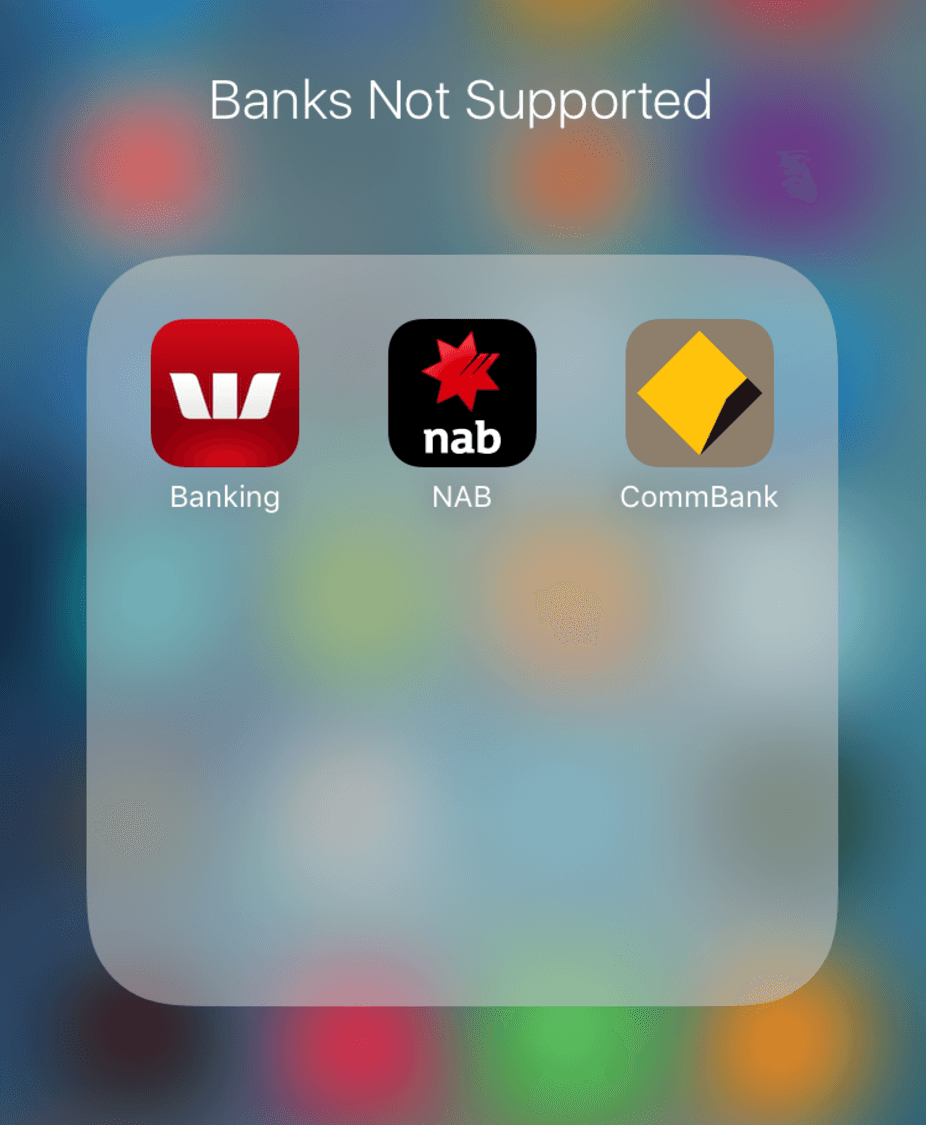The 3 major Australian banks have signalled that they have no intention of supporting Apple Pay any time soon with an updated submission to the Australian Competition and Consumer Commission (ACCC).
Westpac, NAB, Commonwealth and Bendigo and Adelaide Banks had asked the ACCC to be able to be able to collectively negotiate terms and conditions with Apple over the use of Apple Pay. This application was rejected by the ACCC in November last year. It declared in a draft decision that there was insufficient evidence of harm to consumers from Apple’s approach to Apple Pay as there were alternatives to Apple’s devices and to Apple Pay itself.
The banks are now back with an amended proposal. They want to be able to collectively bargain for a period of 18 months rather than 3 years and they have dropped the request to be able to negotiate on the passing of fees onto consumers. They allege they are now only interested in access to the NFC wireless so that they can write their own payment apps in competition with Apple Pay.
Of course, the banks realise that if Apple makes this concession to Australian banks, it “may” have an impact on Apple’s global business which currently includes 3,500 other banks.
In the revised submission, the banks claim that the ACCC was wrong its evaluation and original judgement, as was Apple. They are hoping that taking the negotiation of fees off the table will be enough to a make a difference to the ACCC’s decision and “tip the balance in favour of authorisation”.
Whilst dropping the requirement to be able to discuss passing on fees does address one of the ACCC’s arguments against granting collective negotiation rights, it does nothing to convincingly address the other arguments.
The banks argue that they can’t use alternative technologies like barcodes, Bluetooth or external tags and that they can only use NFC for payments. This already undermines their argument that they are not being allowed to innovate given that they can’t see any other alternative to NFC. The banks also argue that using Apple Pay as the interface to payments from within their own digital wallet apps would be impossible because they would need to display the Apple logo on a button. They state:
“A button that links to Apple Pay is not the same (and cannot offer the same competitive benefits) as having a competitive mobile wallet.”
Again, it comes back to the point that there is absolutely no reason for Apple to provide access to the NFC chip to 4 Australian banks. Even though technically it would be possible to achieve, it would essentially be Apple undermining its own business in this area.
Apple Services generated US $7.2 billion last quarter which now represents as much revenue as generated by Apple’s Mac sales. Apple Pay saw its usage triple over 2016 with transaction volume up 500 percent year on year.
Tim Cook has publicly stated that Apple’s goal is to double revenue over the next 4 years.
Setting aside the arguments about the possibility of Apple self-sabotaging this business plan, Apple is still making the case that allowing third party access to the NFC would increase the security risk and impact on the user experience.
There are now 46 banks in Australia that support Apple Pay. The latest to join are Macquarie and ING Direct. ANZ now claim that 26% of their customers are using Apple Pay with 10 million transactions having been processed since it has been introduced.
In the past few months, Safari now support Apple Pay as a payment mechanism and a growing number of commerce sites now support this type of payment. Combined with the new Touch ID feature of MacBook Pros, paying on the web now simply involves touching the Touch ID sensor.
It is hard to see why the ACCC would want to change its decision based on what the banks have submitted. Allowing them to collectively negotiate would not change the outcome of those negotiations, all it would do is to give the banks someone external to blame for not wanting to satisfy a genuine customer demand.
There is still nothing stopping the banks from delivering functionality in their own apps incorporating Apple Pay as the interface to the NFC. But then this action was never about customers and functionality, it was all about sharing part of their fees that they charge with Apple and not being able to pass that fee on to consumers.

